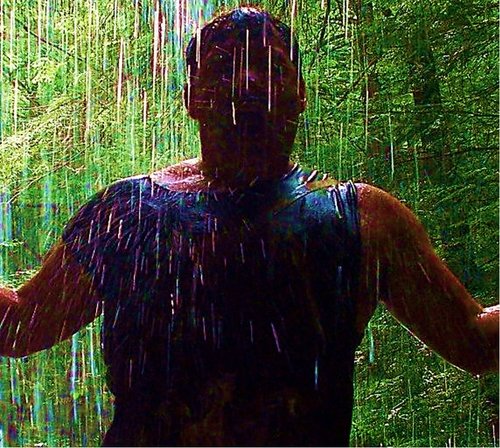MOVIE REVIEWS
 Review by John Chard
Review by John Chard
There are no enemies in science, only phenomena to be studied. The Thing from Another World is set at The North Pole and finds a bunch of U.S. airmen, scientists and a journalist getting more than they bargained for when they investigate a space craft frozen in the ice. What is most striking about the film is the basic human story of team work, the pulling together of mankind during a crisis, this theme is a big shift from the short story by John W Campbell Jr. (Who Goes There?). Where that story and later John Carpenter's wonderful remake focused on paranoia and mistrust, this film is something of the "polar" opposite (literally) as regards the group in peril. It bears all the hallmarks of producer Howard Hawks, who clearly influenced Nyby's direction. The script, with its pros and cons of a military and scientific society, is very much of its time, blending po-faced observations with straight backed joviality. But this all works in the film's favour and helps define it as one of the most important science fiction pictures ever made. Along with the other major sci-fi movie of 1951, "The Day the Earth Stood Still", "TTFAW" firmly brought the visitor from outer space idea into the public conscious. But where the former film intellectualised the alien visitor, resplendent with a message of worth, the latter is about terror, pushing forward the notion that the visitor here is a monster that wants to drink our blood and attempt World domination. No major effects work is needed here because one of the pic's highlights is only glimpsing the creature (James Arness) in little snippets, and this after we are made to wait for some time before things really kick off. This begs us to think for ourselves as regards this stalking menace, putting us firmly with this intrepid group of people, and we want to see them survive and we do care if they can or do succeed. The low end budget doesn't hamper the atmosphere or flow, in fact Nyby, Hawks, cinematographer Russell Harlan and music maestro Dimitri Tiomkin, work wonders to ensure there's a level of authenticity to the Arctic base and that peril is never far away. Not hindered by many of the clichés that would dominate similar themed genre pieces that followed it, film neatly taps into fears that were to become prevalent as the 1950s wore on. It may not be perfect, but a genre star it still be - so watch the sky tonight indeed. 9/10
 Review by Wuchak
Review by Wuchak
**_Stuck at an isolated arctic station with some… Thing_** Scientists at a base in the frozen North discern the crash-landing of an unknown vessel 50 miles away, which they naturally investigate with the corresponding militarists. They bring a mysterious frozen specimen back to the station. Big mistake. “The Thing From Another World” (1951) was the first attempt to film John W. Campbell’s novella Who Goes There? Being shot in 1950, there’s a quaintness to the proceedings compared to the 1982 version with Kurt Russell or the 2011 prequel. This version lacks the grimness of those two future renditions and the extraterrestrial (played by towering James Arness) is lame by comparison. We know from “War of the Worlds” and “The Blob” that flicks from the 50s can feature effective alien creatures and be genuinely scary, but I can’t really say that about this B&W classic, although there’s of course SOME creepiness at the remote station. On the positive side, the elaboration on a mysterious plant-based lifeform from another planet is well-done and interesting. So is the contention between Capt. Hendry (Kenneth Tobey), who is intent on saving lives, and Dr. Carrington (Robert Cornthwaite), who believes scientific discovery is above all, even above all lives on Earth. Speaking of which, the idea about the possible global threat of the lifeform is later explored in the great “Species.” I suggest watching the 2011 and 1982 movies (in that order) and, if you want more, check out this classic for an alternative take on Campbell’s novella, assuming you don’t mind old-fashioned filmmaking and B&W photography. The movie runs 1 hour, 27 minutes, and was shot in Los Angeles (including at the Ice & Cold Storage Company in order to show condensed breath in the interiors); second unit work was done at Glacier National Park, Montana. GRADE: B-